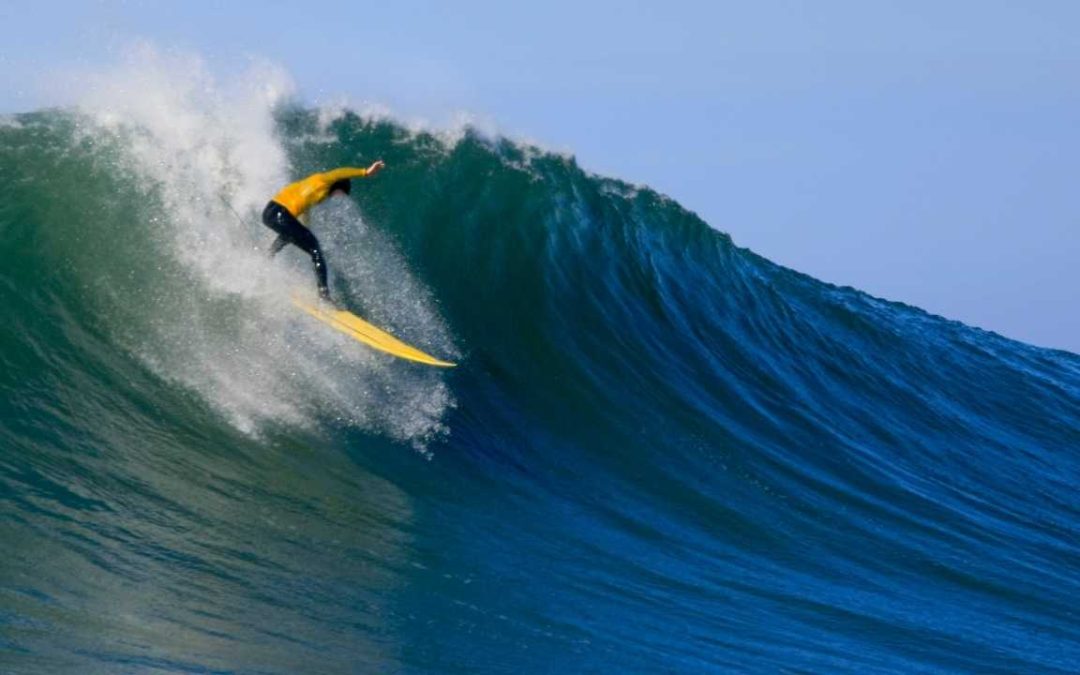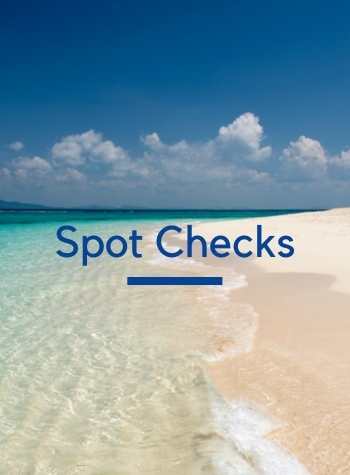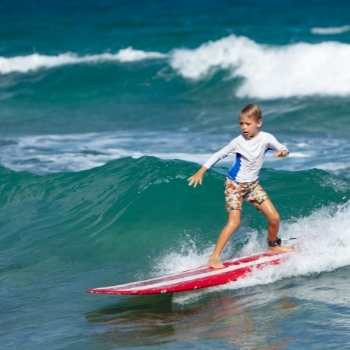Some surfers make it look easy, two or 3 paddle strokes and theyʻre up and riding. Others seem to paddle as if their life depended on it and catch nothing.
So what gives? If youʻre one of those trying your hardest to catch a wave, when is it actually the right time to start paddling for a wave?
It starts with proper positioning, placing yourself preferably at the peak, with no more than 5 paddle strokes needed to catch an approaching wave. As it comes closer, watch how the wave builds, you want to position yourself on the wave to pop up just as the wave is about to crest over the face.
Being able to read waves is an integral part of any surfer’s skill set. With consistent reading, analyzing, and adjusting to what’s happening out there, you will be in the ideal position for catching the waves.
Positioning…More Important Than Paddling
You can paddle all you want, but if youʻre not in the right spot to catch a wave, you will be working really hard for nothing.
Before rushing to the water like an excited kid at a waterpark, take 10 to 15 minutes to watch where the waves are breaking. Locate where the other surfers are lining up and when they begin to paddle, aiming to try and replicate what they do.
As you paddle out to the lineup where the other surfers are, hang back to the side a little bit and watch the waves some more. Not only will this give you a better idea of how to position yourself in the waves, but youʻll be showing respect to the other surfers already out as well.
If you are still having trouble getting out past the breaking waves, youʻll want to dive into this guide on how to paddle back out. It covers everything from duckdiving your shortboard, turtle rolling your longboard, or when you should just bail.
As you watch from the shoulder, begin to take note of how and where the wave is breaking. Look for landmarks on land that can help you locate where that wave will break again. And as the current pack of surfers takes off on the next set, you can quietly slide in and position yourself on the peak.
Paddling For A Wave
Lucky you!
The next wave is headed straight for you and you are in position.
The important thing now is to take your time and be patient. Wait for it to approach. Watch it to make sure that you are not too far out or that itʻs not about to break on your head.
As it draws nearer, turn around and begin paddling, peaking over your shoulder to ensure youʻre still in the right spot. Just a few strokes should be all you need to begin to feel yourself being lifted on the wave.
As you feel yourself catching the wave, stop paddling and push yourself up into a cobra position, putting weight on the hips and legs. Then, when the moment is right, popup to your feet and drop down to the bottom of the wave.
Success!
Hope that wave was a fun one!
Top Tips to Catching the Wave
The ability to read waves correctly is extremely difficult, and not just for beginners. Factors such as the wind and current mean that the waves can sometimes break in unpredictable ways. Here are a few tips to help make it easier for you to catch more waves:
- Precision. This is so important when catching a wave. We’re talking about a difference of being a few feet too far on the shoulder of the wave making it too hard to catch. Some waves require you to be right on the peak to catch a wave.
- Positioning of your take off is vital, so make sure to give multiple glances back, to check if the wave is breaking the way you expect. Aim to be close enough to the curl of the wave (the steep part of the wave) to generate speed.
- Up your speed by paddling perpendicular to the beach, and in your last few strokes, begin to angle your board. Depending if you are riding it to the left or right of the peak, paddle at a slight angle in that direction, keeping pressure on the wave side of your board.
- Use the nose of your board to guide yourself down the wave, in the line you have drawn out in your mind. Keep your eye on the direction you want to go, because believe it or not, you surf with your eyes, as well as your feet.
Catch More Waves By Paddling Better
If you misjudge a wave and either miss it completely or get smashed in the impact zone, at least you will learn what not to do the next time! Mistakes happen, that’s life. Paddling appropriately and effectively takes a lot of time and practice!
So just keep practicing your technique. But how to go about this? Below are a few paddling tricks that should help you out:
- Keep your head still, don’t sway it from side to side. This makes a profound impact on speed and efficiency. It minimizes the level of drag, and keeps your lateral balance in check! Imagine a wooden stick from your head to your feet to keep you aligned.
- Keeping a high elbow when your arm enters the water. This helps keep the hand and forearm in a vertical position from the start of the stroke, which in turn, helps you hold the water and propel yourself further, with an increased surface area over a greater length of time.
- Slight roll from rail to rail. This encourages the arm to lead by the elbow and not the hand, which again, reduces drag (we really don’t like drag if you haven’t already established it). It also helps increase the stroke power by way of using the bigger muscles in the chest to generate more force.
- Cupping your hands and not allowing the fingers to spread open helps build up more speed and power, similar to swimmers with the front crawl. Some people also like to paddle by making an S shape with cupped hands, you can always give this a go next time!
For some of us, we need to dive a little deeper into what it takes to improve our paddling. If thatʻs you and youʻre looking for positioning tips and exercises to improve your paddling for surfing, then check out this guide I put together to take your paddling skills to the next level.
So in a quick summary:
- Identify an oncoming wave and adjust yourself appropriately to achieve the best starting position.
- Start to generate momentum through effective paddling, aiming to match the speed of the wave. Paddle, paddle, PADDLE!
- Feel the wave pick you up and push you forward, hop onto your feet and surf that wave.
- Repeat.
Awareness is key in the surfing world, so it is important to educate yourself on how to adjust and improvise quickly in an almost second nature kind of way, which can only be achieved through practice!
So put your phone, laptop or whatever device you’re reading this on down, grab your board, and get out there!



